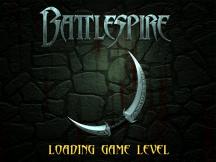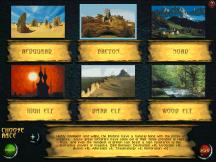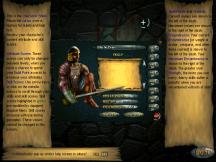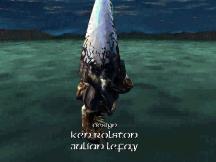Battlespire: An Elder Scrolls Retrospective
Background
Battlespire: An Elder Scrolls Legend is set during the time of Arena, when Jagar Tharn has imprisoned Uriel Septim and taken over the Empire. Through treachery, Jagar has helped several daedra lords invade and conquer the Battlespire, a training ground used by the imperial battlemages who serve the imprisoned Emperor.
Anchored in Oblivion, the Battlespire also guards magicka wellsprings. Seeking to reclaim the magicka flows and oust the intruding mortals, the daedra lords have slaughtered almost every man and mer in the Battlespire. And so enters your character, the hero who recovers the Battlespire (according to the intro movie) and destroys it (according the outro movie).
Through the course of the game, the hero will have escaped the Battlespire, ventured through six different daedric realms within Oblivion, learned something of the politics of Oblivion (everybody loves a good backstabbing), and finally reached the lava-filled realm of Mehrunes Dagon that returned in TES IV: Oblivion.
The Game
Originally planned as an expansion pack for Daggerfall, Battlespire was instead turned into a stand-alone game, with an improved rendering engine, higher resolution, and much more detailed 3D geometry.
Battlespire is probably the least played of the Elder Scrolls games, possibly owing to it shipping in 1997 at the end of the DOS era, when many games where starting to run under Windows and feature graphics accelerators. Thankfully, the game is quite playable under DOSBox, although frame rate does lag significantly in the two outdoor levels.
Given that Battlespire takes place entirely within Oblivion, and you only meet a few surviving humans, many of the things expected in an Elder Scrolls game are missing, including: towns, money, merchants, guilds, trainers, item makers, and spell merchants.
This removes many of the interesting gameplay elements from Daggerfall, while simultaneously making the game immensely more difficult. By itself, combat is moderately more difficult than Daggerfall, but the lack of merchants, trainers and enchanters keeps the player at a distinct disadvantage to opponents in the game. The result is that Battlespire has by far the most difficult combat of any Elder Scrolls game.
In Daggerfall terms, the effect this has on gameplay is like trying to take out a dungeon full of ancient vampires or ancient liches without any protective magic. But in Daggerfall, you only needed to find one route to a specific spot in a dungeon, and could avoid most dangerous foes. In Battlespire, you have to explore almost every room to find
all of the required foozles to solve the puzzles between you and the end of the level.
In the end, the gameplay feels like an expansion pack made for hardcore fans. You've probably seen it before: a game comes out, and a certain segment of the fan community loves the game, but insists it is too easy. "Can't the developers please make it more challenging?" So the devs make an expansion pack or sequel geared to the demands of the vocal fans, producing a game that more casual players find off-putting due to the difficulty.
That's how Battlespire feels: like a hardcore expansion for Daggerfall, focused entirely on more challenging dungeon delving, and stripped of the world exploration, towns, and quests from the original game.
If you played Daggerfall for the dungeons, there's a good chance you'll like this game. However, if you played Daggerfall for the towns, guild advancement, or townie quests, Battlespire is probably not your cup of tea.
On the other hand, Battlespire has the best level design of any Elder Scrolls game. Each level has a unique architecture, giving it a distinct visual style. All of the level architecture is unique and hand-crafted. Very seldom do two rooms look the same, so you never feel like you are playing through the same room copy-n-pasted a dozen times over.
Granted, had Battlespire turned into a sequel to Daggerfall, all of that unique architecture no doubt would have been cloned for every dungeon. That's one of the trade offs of creating a linear game versus a large, open world.
The levels themselves are smaller than Daggerfall's dungeons. Aside from the two outdoor levels (which only have a few points of interest), the entire game feels like it is the size of two large Daggerfall dungeons put together - but it is segmented into eight separate maps, with no backtracking to previous maps. Gameplay is around 30-40 hours for a first play through; by most standards, that is a full game but it still feels small compared to the open worlds of the other TES games.
The size of each level also feels much better suited to gameplay. Levels are neither massive, as in Daggerfall, nor the five-room affairs of Morrowind. The levels are large enough to require time to explore, varied enough that it is easy to keep track
of your location, small enough to quickly backtrack, and they have a variety of puzzles and obstacles that must be overcome to progress.
That is another distinctive feature of Battlespire: each level features several puzzles, obstacles, and riddles that must be solved to advance. Backtracking to previously inaccessible areas is common. The complexity of these puzzles, however, is limited.
The answers to riddles must be typed in, but the answer is always written on a scroll or provided in dialog with an NPC, and the "riddles" are often little more than questions or prompts for passwords. Obstacles often require little more than the lever, button, or key to open a door, or the daedric sigil required to get past exploding runes.
The overall difficulty for this part of the gameplay is rather simple by the standards of adventure games, yet still ends up being far above what is found in the rest of the TES games.
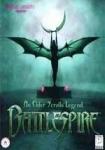
Information about
An Elder Scrolls Legend: BattlespireDeveloper: Bethesda Softworks
SP/MP: Single + MP
Setting: Fantasy
Genre: RPG
Combat: Real-time
Play-time: 40-60 hours
Voice-acting: Full
Regions & platforms
World
· Homepage
· Platform: PC
· Released: 1997-06-30
· Publisher: Bethesda Softworks
More information


